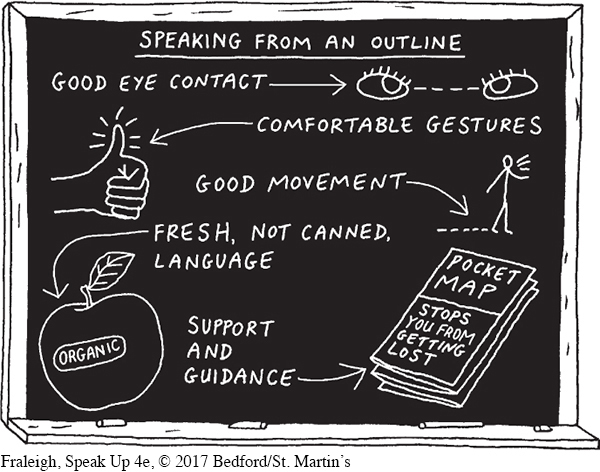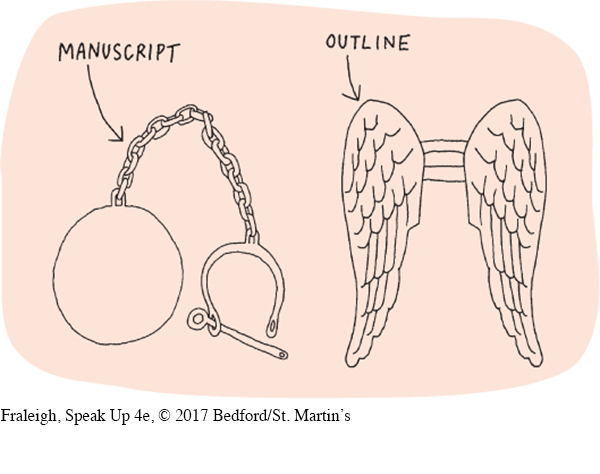Speaking From an Outline
In this mode of delivery—
You should be able to glance at this brief outline and instantly remember what you want to say. If you’ve made the note cards easy to read (for example, by using large print and spaces between lines), you can maintain eye contact with your audience. Using this brief outline to deliver your speech will allow you to speak extemporaneously, meaning you will write the outline ahead of time, learn the material in the outline, and then speak spontaneously in the presentation with only the outline available for reference.
373

Speaking from an outline offers the best aspects of reading from a script and memorizing your speech while avoiding their disadvantages. You can glance at the outline just long enough to spur your memory, so there’s no barrier between you and your audience, and your eye contact does not suffer. Also, you don’t have to worry about forgetting your place because the outline is at hand to remind you.
Equally important, when you speak from an outline, your delivery becomes more conversational. You sound as if you are talking with your listeners instead of reading a speech to and at them. Finally, with this delivery mode, you choose your words flexibly, so you can adapt your message as needed to the audience at hand. For instance, if you notice that a listener looks confused, you can provide further explanation for the point you’re discussing.
Of course, speakers need to practice delivering from their outlines to give the best possible presentation. This practice is also beneficial in another way: research indicates that practice and preparation can lessen the anxiety that speakers feel when it is time to present.1
374
